Are you considering cotton tote bags for your business or personal use? Many people see them as a simple, eco-friendly choice. But there is often more to the story.
Cotton tote bags offer natural appeal and reusability. However, their true eco-friendliness depends on frequent use due to cotton’s production impact. They are generally durable but can shrink and are not waterproof.
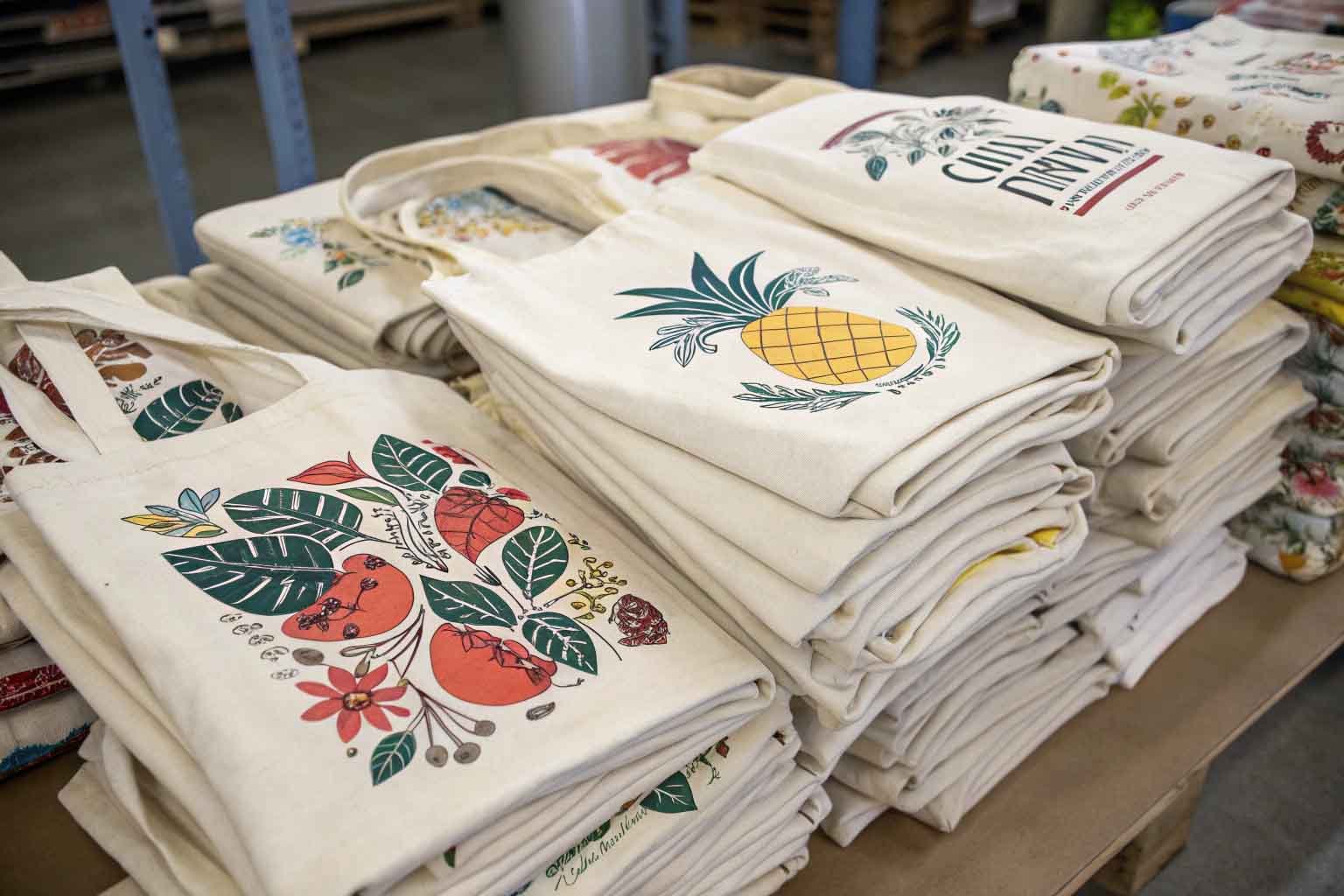
Many of us reach for a cotton tote bag without a second thought. They seem like a great alternative to plastic. I get it. When I started Avecobaggie, cotton bags were our foundation. They are popular for a reason. But, like anything, they have their upsides and downsides. Let’s explore them together so you can make the best choice for your needs.
Are cotton produce mesh bags a good alternative?
Tired of flimsy, single-use plastic bags for your fruits and veggies? Cotton produce mesh bags offer a reusable solution. But are they perfect for every shopping trip?
Cotton produce mesh bags are great for reducing plastic waste and keeping produce fresh. They are lightweight and washable. However, they might not suit very delicate items or fine powders.
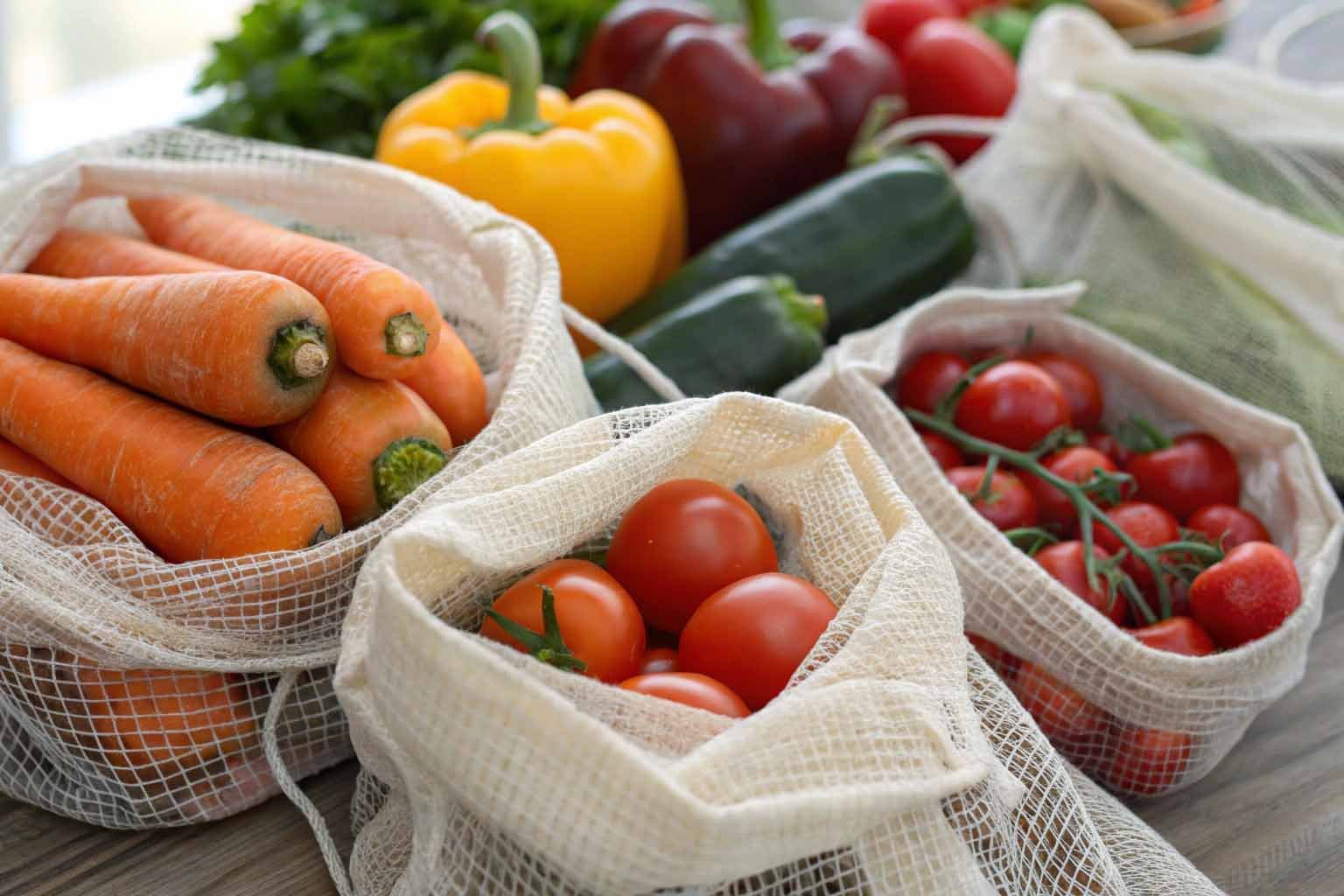
Understanding Cotton Produce Mesh Bags
Many of my customers at Avecobaggie are looking for sustainable ways to reduce everyday waste. Cotton produce mesh bags often come up in our conversations. These bags are typically made from cotton, sometimes organic cotton, and feature a mesh or net-like construction. This design has a few key benefits.
First, let’s talk about what makes them appealing.
The primary advantage is their reusability. You can wash them and use them again and again. This directly helps reduce the number of plastic bags that end up in landfills or oceans. I always feel good when I see someone using them at the grocery store.
について mesh design allows air to circulate around your produce. This can help keep some fruits and vegetables fresher for longer compared to being tightly packed in plastic. Think about items like apples, oranges, potatoes, and onions. They benefit from this airflow.
Cotton is a natural fiber. So, at the end of their life, these bags are biodegradable, assuming they are 100% cotton and don’t have synthetic labels or drawstrings. This is a big plus for people trying to lessen their environmental impact.
They are also lightweight and don’t add much extra weight at the checkout scale. This is a practical point many people appreciate.
However, there are some things to consider.
While durable for their purpose, the mesh structure might not be ideal for very delicate produce, like ripe berries, as they could get bruised. Also, fine or powdery items, like flour or loose tea, would obviously fall through the mesh. For these, a more tightly woven cotton bag would be better.
Cotton absorbs moisture. If you put wet produce in them, the bag will get damp. This isn’t a huge problem as they are washable, but it’s something to remember.
Cleaning is important. You need to wash them regularly to prevent bacteria buildup from food residue. Most can be machine washed, but it’s good to check any care labels. As I’ve learned, sometimes a gentle wash is best to maintain their shape.
簡単な比較をしてみよう:
| 特徴 | Cotton Produce Mesh Bag | Single-Use Plastic Produce Bag |
|---|---|---|
| 再利用性 | High (washable) | Low (often single-use) |
| 通気性 | 素晴らしい | Low (can trap moisture) |
| 素材 | Natural (cotton) | Synthetic (plastic) |
| 耐久性 | Moderate (can last many uses) | Low (tears easily) |
| 終末期 | Biodegradable (if 100% cotton) | Landfill, pollution |
| コスト | Higher initial cost, low per-use cost | Very low initial cost |
When I first explored adding produce bags to our Avecobaggie line, the mesh design was a clear winner for general produce. It balances visibility of the items with good airflow. They’re a practical step towards a more sustainable lifestyle.
Are cotton tote bags truly eco-friendly?
Many people believe cotton tote bags are the ultimate green choice. But is that always the case? The story of cotton’s environmental impact is quite complex.
Cotton tote bags can be eco-friendly if used many times. This is because conventional cotton farming uses significant water and pesticides. Organic cotton is better, but reuse is key.
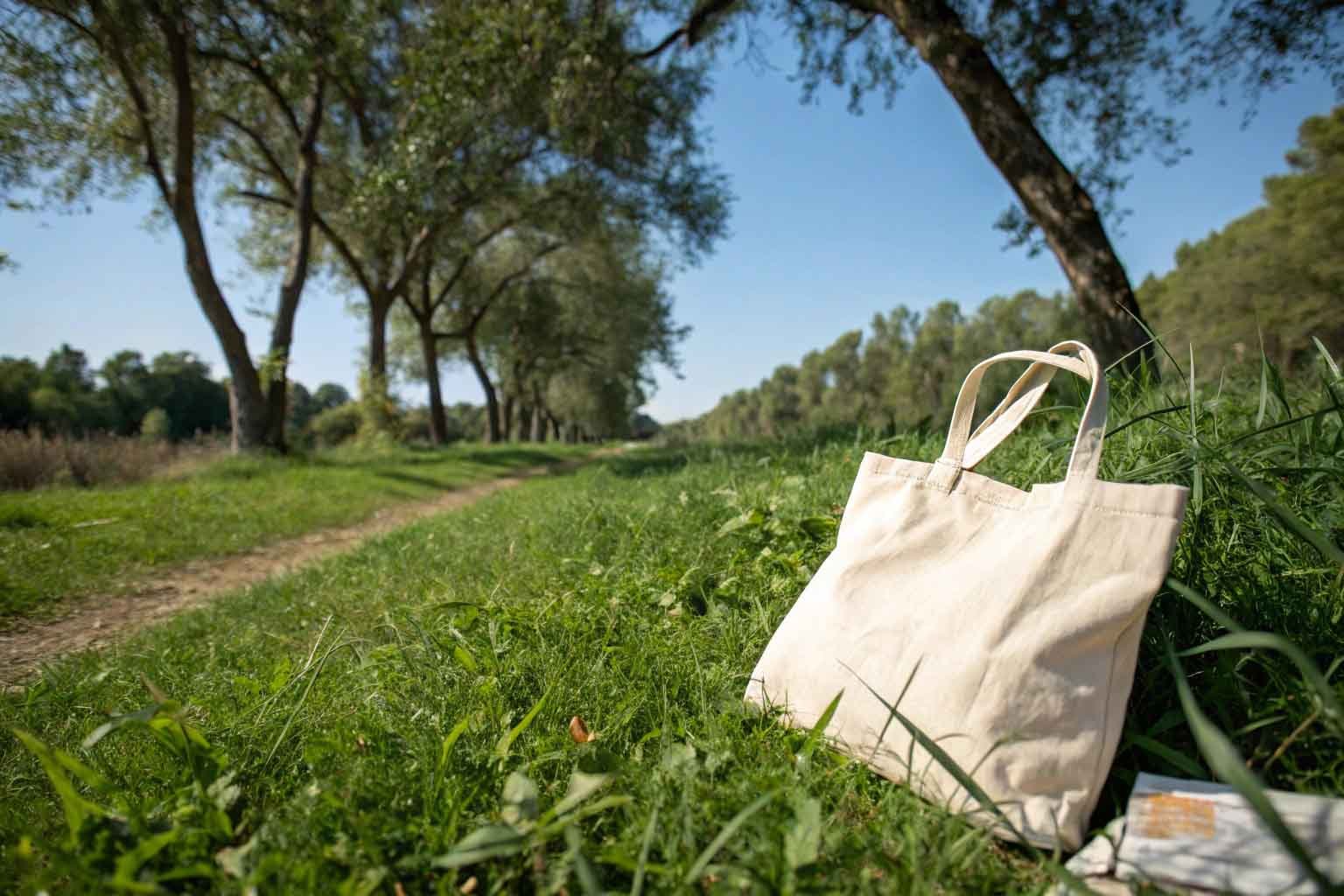
The Environmental Footprint of Cotton Totes
This is a question I discuss frequently with my clients at Avecobaggie. Everyone wants to make sustainable choices. And cotton, being a natural fiber, feels inherently eco-friendly. It is biodegradable, which is a huge plus compared to plastic. But we need to look at the whole lifecycle.
Let’s break down the "eco" claim:
On the positive side, cotton is a renewable resource. Unlike synthetic materials derived from fossil fuels, cotton plants can be grown year after year. And, as mentioned, it biodegrades1 at the end of its life, returning to the earth. This is a strong argument in its favor.
However, there are hidden costs.
Conventional cotton farming is very water-intensive. It can take thousands of liters of water to produce just one kilogram of cotton. In regions where water is scarce, this puts a huge strain on local resources. I remember reading a report that shocked me about the water footprint, and it made me think much harder about material sourcing.
Pesticide and herbicide use in conventional cotton farming is also a major concern. These chemicals can harm biodiversity, pollute water sources, and affect the health of farmworkers. This is why the shift towards organic cotton is so important.
Organic cotton offers a more sustainable alternative.
Organic farming standards prohibit the use of synthetic pesticides and fertilizers. It often involves practices that improve soil health and use water more efficiently. When clients ask for the "greenest" cotton option, I always point them towards certified organic cotton. It does cost a bit more, but the environmental benefits are significant. We also explore recycled cotton, which uses textile waste to create new fibers, reducing the need for virgin cotton production.
The crucial factor: Reusability.
A study by the UK Environment Agency in 2011 highlighted that a cotton tote bag needs to be used many times (some studies say over 130 times) to offset the higher carbon footprint of its production compared to a classic plastic bag used once. This number can vary based on the study and type of cotton, but the message is clear: a cotton tote is only eco-friendly if it’s used regularly and for a long time. If you have dozens of them sitting in a cupboard unused, that’s not very green.
Here’s a look at different cotton types:
| Cotton Type | Water Usage | Pesticide Use | エコインパクト | コスト |
|---|---|---|---|---|
| Conventional | 非常に高い | 高い | 高い | より低い |
| Organic | より低い | None/Minimal | 中程度 | より高い |
| Recycled | Lowest | Minimal | より低い | 可変 |
| BCI Cotton | 削減 | 削減 | Lower-Moderate | ミッドレンジ |
BCI (Better Cotton Initiative2) cotton aims to make global cotton production3 better for the people who produce it and better for the environment it grows in.
So, when you get a cotton tote, the best thing you can do for the planet is to use it as much as possible. That’s the core of its eco-friendliness. At Avecobaggie, we encourage this by offering durable, well-made bags that people will want to use over and over.
How durable are cotton tote bags for daily use?
You want a bag that can handle your daily grind, right? Cotton totes are popular, but will they last? Their sturdiness can vary quite a bit.
Cotton tote bags are generally durable for everyday items like groceries, books, or gym gear. Their lifespan depends on the fabric’s weight (GSM) and how well the bag is made.
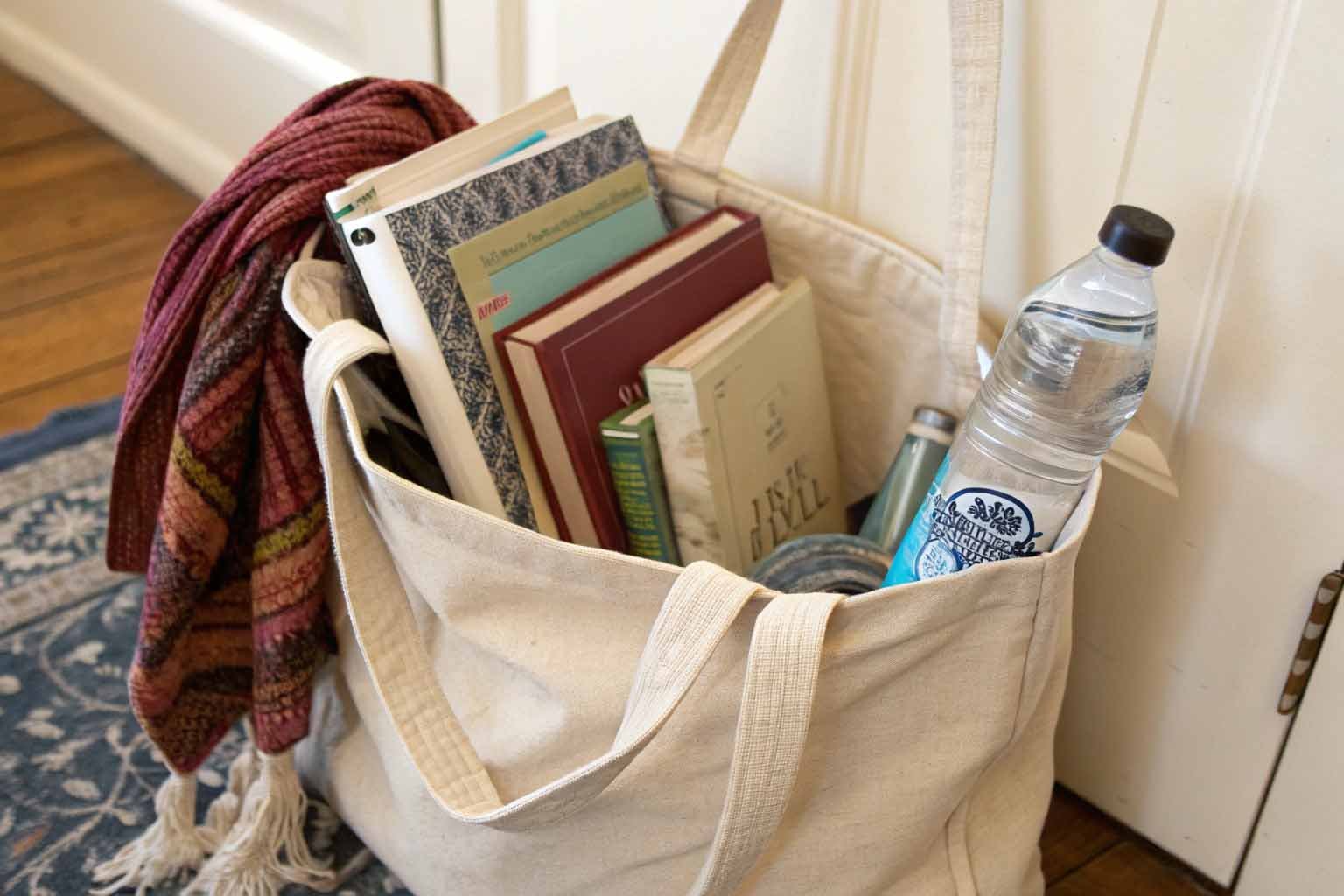
Assessing the Strength of Cotton Totes
When businesses come to Avecobaggie for custom bags, durability is always a key topic. A bag that falls apart quickly reflects poorly on their brand. So, let’s talk about what makes a cotton tote bag strong.
Several factors influence a cotton tote’s durability:
The most important is the fabric weight, often measured in ounces (oz) or grams per square meter (GSM). A higher GSM means a thicker, heavier, and usually more durable fabric. For example, a 5oz (around 140-150 GSM) cotton is common for promotional totes. It’s lightweight but can handle light groceries or books. A 10oz (around 280-300 GSM) or 12oz (around 340 GSM) cotton is much sturdier and suitable for heavier loads or more frequent, rugged use. I’ve seen these heavier bags last for years.
The weave of the cotton also plays a role. Canvas, which is a plain-weave cotton fabric, is known for its strength and durability. It’s often used for heavy-duty totes.
Construction quality is vital. Look at the stitching, especially around the handles and seams. Reinforced stitching, like cross-stitching (often an ‘X’ in a box) where the handles meet the bag, significantly increases strength. The quality of the thread used also matters.
How do they hold up in typical daily scenarios?
For carrying everyday essentials – a laptop, notebooks, a water bottle, a packed lunch – a standard-weight cotton tote (around 6-8oz) usually does a good job.
For grocery shopping, a slightly heavier weight (8-12oz) is preferable, especially if you’re buying heavier items like cans or bottles. The handles need to be securely attached.
As a library bag or for carrying books, a strong canvas tote is ideal. Books can be surprisingly heavy and have sharp corners.
What are their weaknesses?
While cotton is strong, it’s not invincible. Overloading a lightweight tote with excessively heavy or sharp-cornered items can lead to tears over time, especially if the construction isn’t top-notch.
They are also not inherently waterproof. Cotton absorbs water, so if you’re caught in the rain, the contents of your bag might get wet. Some cotton bags can be treated for water resistance, but that’s not standard. This is something I always clarify with clients who might be using bags for outdoor events.
Like any fabric, cotton will show wear and tear with prolonged use. Fading, slight fraying at edges, or thinning of the fabric can occur after many uses and washes.
Here’s a general guide to cotton weight and use:
| Cotton Weight (oz) | Approx. GSM | 一般的な用途 | Durability Level |
|---|---|---|---|
| 4-5 oz | 110-150 GSM | Promotional giveaways, very light items | ベーシック |
| 6-8 oz | 170-230 GSM | Everyday shopping, books, general use | グッド |
| 10-12 oz | 280-340 GSM | Heavy groceries, beach bags, very frequent use | 非常に良い |
| 14 oz + | 390+ GSM | Tool bags, heavy-duty utility | 素晴らしい |
At Avecobaggie, we offer a range of cotton weights. I always advise clients to consider what the bag will primarily be used for. A little extra investment in a heavier fabric can mean a much longer lifespan for the bag, which is better for their brand and for the environment.
Can cotton tote bags shrink after washing?
You’ve got a great new cotton tote, maybe with your brand logo on it. The last thing you want is for it to shrink to half its size after the first wash! This is a valid concern.
Yes, cotton tote bags can shrink, especially if washed in hot water or dried in a hot dryer. Natural cotton fibers tend to contract. Cold washing and air drying help minimize this.
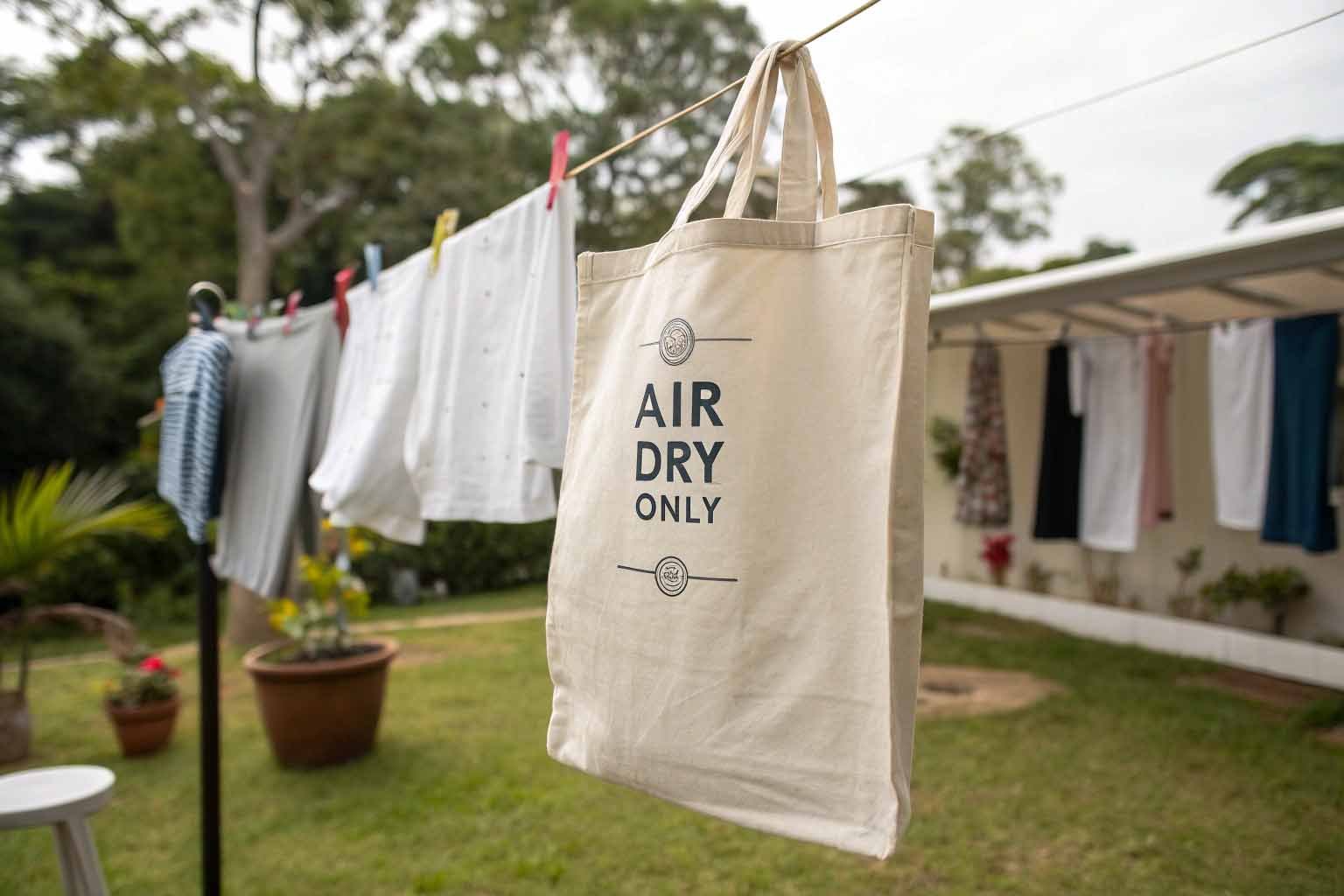
Understanding and Preventing Shrinkage
Shrinkage is a common characteristic of natural fibers like cotton. I’ve definitely had my share of "oops" moments with early samples when I wasn’t careful enough with washing! It’s frustrating, but understanding why it happens can help you prevent it.
Why does cotton shrink?
When cotton fibers are spun into yarn and woven into fabric, they are put under tension. Washing, especially with heat and agitation, allows these fibers to relax and return to a more natural, shorter state. This causes the fabric to contract, which we see as shrinkage. The amount of shrinkage can depend on the weave and quality of the cotton.
How do different washing methods affect shrinkage?
Hot water is the main culprit. It causes cotton fibers to swell and then contract more significantly as they dry.
Machine drying, especially on a high heat setting, also contributes greatly to shrinkage. The heat and tumbling action can be harsh on cotton fibers.
Cold water washing is much gentler on cotton. It cleans effectively for most everyday dirt and is less likely to cause significant shrinkage.
Air drying is the best way to dry a cotton tote if you want to avoid shrinkage. Lay it flat or hang it up to dry naturally. If you must use a dryer, use the lowest heat setting or an air-tumble setting.
What can you do to minimize shrinkage?
- Check the Label: Some bags come with care instructions. Always follow them.
- Wash Cold: Use cold water and a mild detergent.
- Gentle Cycle: If machine washing, select a gentle cycle to reduce agitation.
- Air Dry: This is the safest bet. If you air dry it flat, it can also help retain its shape.
- Pre-Shrunk Cotton: Some cotton fabrics are "pre-shrunk" during manufacturing. This means they’ve already undergone a controlled shrinking process, so they will shrink less, if at all, during subsequent washes. This is a great feature to look for, and something we offer for certain custom orders at Avecobaggie.
What if your bag has already shrunk a little?
Sometimes, you can gently stretch the bag back into shape while it’s still damp. Be careful not to pull too hard, especially at the seams or handles.
Here’s a quick guide to washing and potential outcomes:
| Washing Method | Shrinkage Risk | Color Retention | Fabric Wear |
|---|---|---|---|
| Hot Water, Hot Dryer | 高い | Lower (fading) | より高い |
| Warm Water, Medium Dryer | 中程度 | 中程度 | 中程度 |
| Cold Water, Air Dry | 低い | より高い | より低い |
| Cold Water, Low Dryer | Low-Moderate | より高い | Low-Moderate |
When my clients at Avecobaggie ask about caring for their printed cotton totes, I always stress cold washing and air drying. It not only preserves the size and shape of the bag but also helps the print last longer. A little care goes a long way in keeping those totes looking good.
Are cotton totes a cost-effective branding choice?
You’re looking for a smart way to promote your brand. Cotton totes are popular, but do they offer good value for your marketing budget? It’s about more than just the price per bag.
Cotton totes can be a cost-effective branding tool. They offer a high perceived value, act as mobile advertisements, and align brands with eco-conscious values, leading to good return on investment.
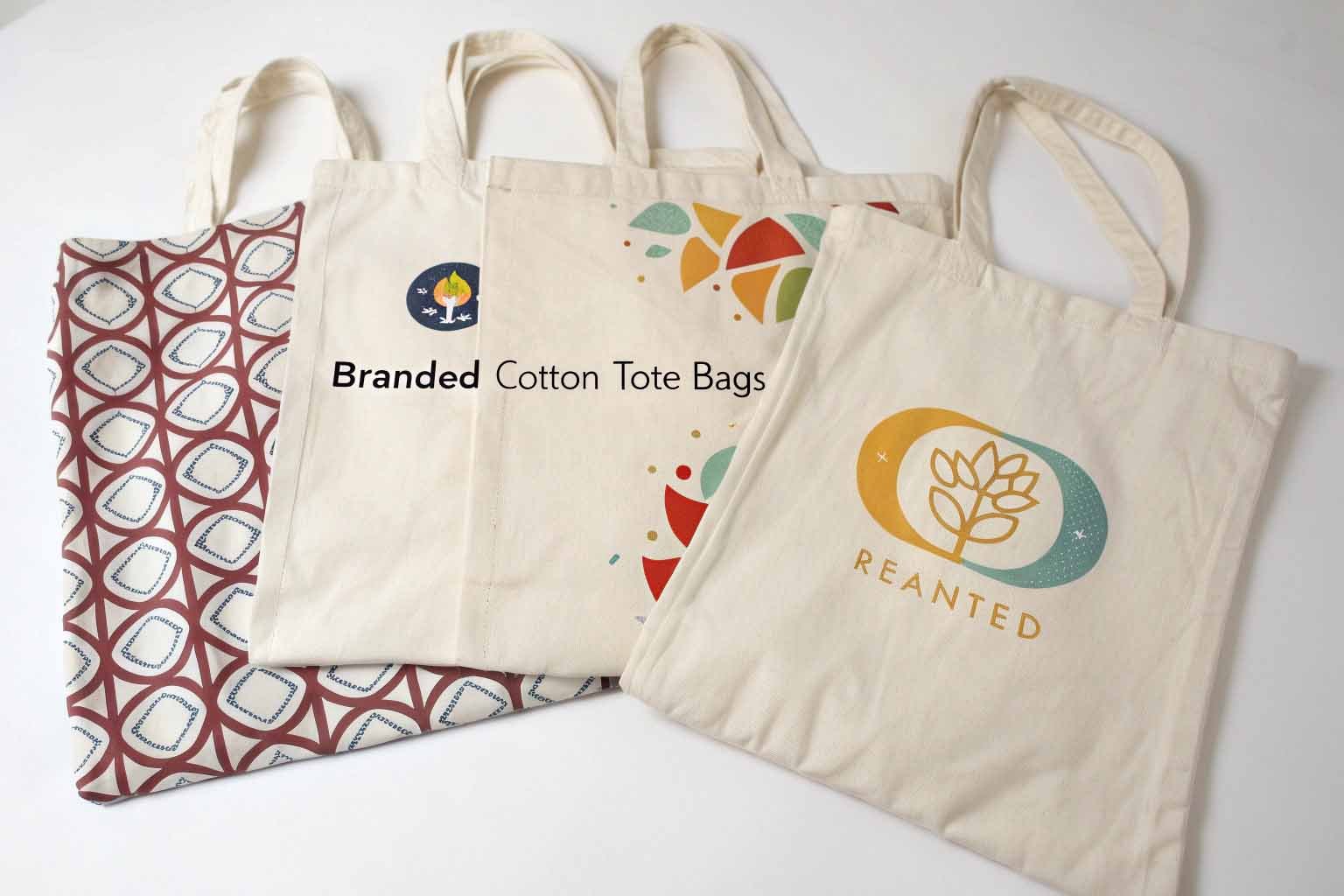
Evaluating Cotton Totes for Brand Promotion
This is a very practical question, and one I help businesses work through all the time at Avecobaggie. "Cost-effective" doesn’t just mean "cheapest." It means getting the best value and impact for your investment.
Let’s look at the cost versus value:
The initial unit cost of a cotton tote bag is generally higher than, say, a basic non-woven polypropylene bag or a plastic bag. This is due to the cost of cotton as a raw material and often more complex manufacturing. However, the perceived value of a cotton tote is usually much higher. Customers tend to see cotton bags as a more premium, thoughtful, and durable item. I’ve noticed that people are more likely to reuse a cotton tote bag for a longer period than a cheaper-feeling alternative.
How cotton totes work as branding tools:
- Walking Billboards: When your customers carry a tote bag with your logo, they are essentially advertising your brand wherever they go – to the grocery store, the gym, the library, or work. This repeated exposure is incredibly valuable.
- Brand Association: Offering cotton totes can align your brand with positive values like sustainability and quality. This is especially powerful if your target audience cares about environmental issues. It says you’re a thoughtful brand. I’ve seen this work wonders for many of my clients, from small artisan shops to larger eco-conscious companies.
- カスタマイズ: Cotton is an excellent canvas for printing. You can get vibrant, detailed designs using screen printing or digital printing. Embroidery is also an option for a more high-end look. This allows you to create a bag that truly reflects your brand’s personality.
- Longevity = More Impressions: Because well-made cotton totes are durable, they stay in circulation longer. This means more impressions per bag compared to a flimsy one that gets discarded quickly. Each use reinforces your brand.
What factors influence the cost?
- Quantity: Like most custom products, the more you order, the lower the price per unit.
- Cotton Type & Weight: Organic cotton or very heavy canvas will cost more than standard lightweight cotton.
- Print Complexity: The number of colors in your design, the size of the print, and whether it’s printed on one or two sides will affect the price.
- Origin & Certifications: Bags made with certified organic cotton or Fair Trade labor may have a higher cost, but they also add to your brand’s story.
- Additional Features: Things like zippers, inside pockets, or custom-dyed fabric will add to the cost.
Comparing with other bag types:
| バッグタイプ | Approx. Unit Cost (Plain) | 知覚価値 | Branding Impact | 耐久性 | Eco-Perception (General Public) |
|---|---|---|---|---|---|
| Cotton Tote | Moderate – High | 高い | Strong, Eco-conscious, Stylish | Good-High | Positive |
| 不織布PP | Low – Moderate | 中程度 | Functional, Budget-friendly | 中程度 | Mixed (often seen as ‘less plastic’) |
| Jute Tote | 中程度 | 高い | Rustic, Eco-friendly, Sturdy | 非常に高い | Very Positive |
| Paper Bag | 低い | Low-Moderate | Basic, Recyclable | 低い | Positive (if recycled/recyclable) |
For many businesses I work with, particularly those in retail, wellness, or creative industries, cotton totes provide an excellent return on investment. They aren’t just a giveaway; they are a desirable item that customers value and use. This continued use translates into ongoing brand visibility. It’s about choosing a promotional item that aligns with your brand’s quality and message.
結論
Cotton tote bags have clear pros like natural feel and reusability. They also have cons like water usage in production and potential shrinkage. Your informed choice makes them valuable.
-
This resource will explain the biodegradation process of cotton and its positive effects on the environment, crucial for eco-conscious consumers. ↩
-
Explore this link to understand how the Better Cotton Initiative is transforming cotton production for sustainability and social responsibility. ↩
-
Discover insights on the advancements in global cotton production aimed at enhancing sustainability and supporting farmers. ↩


